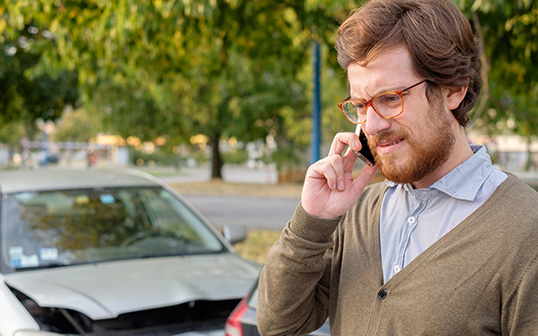
Advice from a Connecticut Personal Injury Attorney
In the aftermath of an auto accident where injuries occur, there is often confusion about who is immediately responsible for the medical bills and property damage. In Connecticut, responsibility for property damage rests with the person who caused the accident.
However, the parties who are injured are responsible for their personal medical expenses, and do not receive reimbursement from the driver who was at fault until a bodily injury claim is resolved through settlement or after trial, usually years following the accident. It is therefore important to immediately determine the source of medical, property and liability coverage so that bills can be paid as quickly as possible.
navigate the aftermath of an accident, starting with these three questions:
1. Does your auto policy include medical coverage?
Connecticut provides the option of including medical coverage (“med pay”) on automobile policies. This coverage provides medical benefits to the policyholder for accident related injuries, and can sometimes offer limited disability benefits if wages are lost because of the accident. If you have med pay coverage on your auto policy it becomes the primary source of reimbursement for medical providers until it is exhausted, and then health insurance takes over. If you do not have medical coverage on your auto policy, then your health insurance pays for accident related medical care.
Confusion can arise over the source of medical coverage after an accident. Healthcare providers often assume that a person who is being treated for accident related injuries will receive coverage from their auto policy. This can be wishful thinking by the provider, because the coverage available from auto insurance med pay benefits is usually more generous than reimbursement from government programs like Medicare or from private health insurance.
Even when health insurance information is furnished to a provider, the hope of greater rates of reimbursement from an auto carrier can lead providers to delay processing the medical claim. Similarly, health insurers will sometimes delay paying benefits when their insured is in an accident hoping there is coverage available through the injured person’s automobile carrier. It is not unusual for accident victims to find themselves with delinquent medical bills because of this “confusion” over the source of coverage.
It is essential to immediately determine if you have medical coverage available through your automobile policy, and to ensure that all medical providers and your health insurer understand and acknowledge the primary source of medical benefits for accident related care.
2. What are the liability coverage limits of the driver who caused the accident?
Another option on your personal auto policy is UM coverage, also known as uninsured or underinsured motorist coverage. The purpose of UM coverage, which is optional in Connecticut, is to provide you with a source of bodily injury compensation if you are hurt by a driver who has inadequate insurance or no insurance at all. Connecticut allows drivers to maintain auto liability coverage with a minimum limit of $20,000 per injured person and $40,000 per accident. Given medical costs, a trip to the emergency room, an MRI, a few visits with an orthopedist, and a few sessions of physical therapy will make short work of $20,000.
If you have sustained a serious or lingering injury in an automobile accident and you have UM coverage, it is essential to know the liability policy limits of the person who caused your injury. If the other driver had no insurance or minimal liability coverage, it is possible that you will have to make a claim against your own auto carrier; and you should be prepared for an adversarial situation with the company that insured your car.
3. Does the driver responsible for the accident have coverage for the property damage?
If the automobile carrier of the driver at fault in the accident accepts responsibility for the collision, the best way to resolve your repair bills is to make a direct claim against the other driver’s insurance. The alternative is to submit the claim to your company, which will then “subrogate” the claim by seeking reimbursement from the carrier of the driver who was at fault. However, if you proceed against your own coverage to obtain reimbursement for the damage, the compensation you will receive from your insurer will be reduced by the deductible you maintain on the policy.
To get full reimbursement, without reduction of the deductible, it is best to submit the property damage claim to the auto carrier of the driver that caused the accident. The other driver’s company is required to reimburse you without considering the deductible on your personal coverage, so you will be more fully compensated.
Navigating the circumstances that arise following an automobile accident can be complex and have far-reaching effects. A Connecticut personal injury attorney can help. Before trying to do it yourself, call us at Cacace, Tusch & Santagata.
